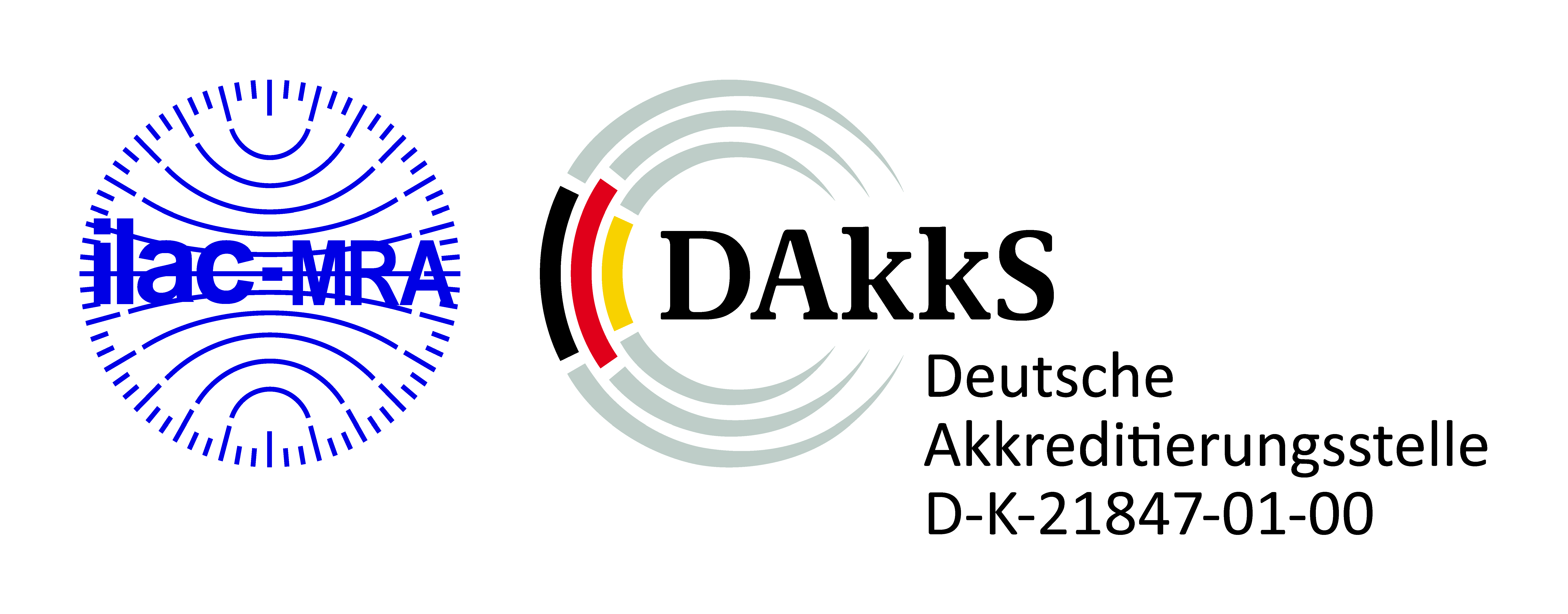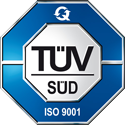What to pay attention to when choosing a device?
Radon measuring devices are available for a few hundred to a few thousand euros. However, advertising and even data sheets often reveal too little about the properties of the devices and the associated restrictions. It is only after purchase that you realize that a device is unsuitable for the intended application. The measurement of radon is complex, each measuring principle has its advantages and disadvantages. We explain the four most common measurement methods and help you select the optimal device for your application.
All radon measuring devices have a closed measuring chamber into which the radon is diffused or pumped. There it decays and produces radioactive daughter nuclides which, since they are all heavy metals, remain in the measuring chamber and gradually decay there until they have become no longer radioactive lead. The number of all within a time interval — we speak of counting interval — decays recorded in "radioactive equilibrium" is proportional to the radon activity concentration of the measured air. The radioactive equilibrium only sets in for each daughter nuclide after a certain time, which depends on its half-life; you usually calculate with five times the half-life. It therefore always takes a certain amount of time until the measurement signal has reached its end value; we speak of the response time. In addition, the counting interval must be long enough for a sufficiently high number of decay events to be registered in the measuring chamber. Both are different things — if a device displays a measured value after ten minutes, it does not mean that it already represents the true value.
The daughter nuclides relevant for radon measurement only reach radioactive equilibrium after approx. three hours!
Depending on the measuring device, the decays of radon and its daughter nuclides are converted into electrical, countable pulses by different measuring principles. There are significant technical and physical differences between the measurement methods.
The following are common in modern measuring devices:
- Electrostatic deposition and α-spectroscopy with a semiconductor detector
- Ionization chamber
- Scintillation chamber (Lucas cell)
- Photodiode
1 Electrostatic deposition and α-spectroscopy with a semiconductor detector
Advantages:
- Shortest response time thanks to separate measurement of Polonium-218 (approx. 15 minutes)
- No influence of long-term contamination from Polonium-210
- Separate measurement of radon and Thoron, masking of the background by Thoron daughter nuclides
- Each measured value can be checked using the measured spectrum.
- Very small lower and very high upper measuring range limits
Disadvantage:
- Complex and relatively expensive due to large-area silicon detectors
- Sensitive to condensation
- Low sensitivity per volume of chamber, if only particular daughter nuclids are used for the measurement
A high-voltage field is generated between a dome-shaped measuring chamber and a large-area silicon detector in the middle. When radon decays, positively charged Polonium-218 is formed. The field geometry is designed in such a way that these ions are deposited on the surface of the detector by electrostatic attraction. When the Polonium-218 and all other daughter nuclides decay, the entire emission energy is transferred to the detector. With each decay it generates a short electrical pulse, the level of which is proportional to the emission energy. Each daughter nuclide has a different, precisely defined emission energy. This enables the decays for each daughter nuclide to be differentiated on the basis of their pulse height and counted separately.
This method, called α-spectroscopy, offers the possibility to use only the decays of the Polonium-218 for the measurement. Polonium-218 is at the very beginning of the decay chain and has a half-life of approximately three minutes. The radioactive equilibrium is established after 15 minutes.
2 Ionization chamber
Advantages:
- High sensitivity in relation to the chamber volume, since all decays are included in the measurement
- Simple and cheap construction
Disadvantage:
- Growing background and rising detection limit due to long-term polonium 210 contamination
- Long physical response time (approx. 3 hours)
- Spectroscopic separation of radon and Thoron not possible
- Verification of the measured value is only possible incompletely with additional monitoring devices
- Sensitive to condensation and vibrations
- Measuring range limited downwards by compensation of external radiation and spontaneous ionization
- Counting measurement only up to a few kilobecquerels per cubic meter
In the middle of a cylindrical metal chamber is a wire that acts as an electrode. An electrical field is generated between the chamber wall and the wire with a high voltage. When the radon and its daughter nuclides decay, the α-particles ionize air molecules along their flight path. The charge carriers thus created allow current to flow between the chamber wall and the center electrode. The time integral of the current is proportional to the number of ionized air molecules and thus the transmitted emission energy.
Let's investigate whether an α spectrum can also be determined with this method!
Depending on the decay energy of the nuclide in air, the α-particles have a range of 4 to 8 cm. On their way, they ionize different numbers of air molecules — the longer the way, the more. Many α-particles land on the wall in small chambers. Energy-rich α-particles therefore do not generate as many air ions as they could and so the resulting current impulse cannot be distinguished from low-energy α-particles.
If you make the chamber bigger, another effect comes into play. The limited mobility of the air ions means that the molecules ionized by an α-particle take a certain time until they have all reached the cathode. The current pulses become longer the longer the path that the ions have to travel. Even at concentrations in the range of a few kBq/m³, these impulses overlap to form a continuous current signal. More complex devices switch from pulse operation (counting the decays) to current operation from a certain concentration, but spectroscopic information can only be derived from the pulse heights, but not from the current intensity measured during current operation.
One way out is provided by large-volume chambers with many wire or rod-shaped individual electrodes lying close together. Here the decay energy of all nuclides can be completely transferred into the air. In addition, shorter impulses are generated because the air ions only have to travel to the next wire. Nevertheless, even with such technically complex multi-wire ionization chambers, the spectroscopic resolution is reduced by the fact that the ionization rate of the air is a statistical variable. So the spectrum becomes blurred. So for instance Polonium-218 and Polonium-214 can well be separated from each other, while Polonium-216 (Thoron derived product) or Polonium-210 (long-term contamination) can not be separated.
3 Scintillation chamber (Lucas cell)
Advantages:
- High sensitivity in relation to the chamber volume, since all decays are included in the measurement
- Insensitive to external radiation, vibration, fluctuations in humidity and temperature
- Counting measurement over the entire measuring range
Disadvantage:
- Growing background and rising detection limit due to long-term polonium 210 contamination
- Long physical response time (approx. 3 hours)
- Separation of radon and Thoron is not possible spectroscopically
- Verification of the measured value is only possible incompletely with additional monitoring devices
- Measuring range limited at the bottom by spontaneously triggered detector signals
The inside of the measuring chamber is coated with a scintillation crystal. If an α particle emitted during a decay hits this layer, this converts the energy into a flash of light. There is a detector on one side of the chamber, which in turn converts the light into an electrical pulse. The pulse is very short, so that the scintillation chamber operates in pulse mode even at high radon concentrations.
Spectroscopic measurement of the radon daughter nuclides is not possible because the α-particles release part of their emission energy to the air on the way to the chamber wall. However, complete energy transfer is a prerequisite for selective measurement.
In contrast to the electrostatic deposition or ionization chamber, the radon daughter nuclides are not completely deposited on the surfaces of the chamber. A non-definable part remains in the measuring air and would be pumped out of the chamber in flow mode. The radioactive equilibrium would be disturbed and the measured value calculated too low. Scintillation chambers therefore mostly work in diffusion mode.
The detectors used to convert the light signal generate a background signal so that the lower limit of the measuring range is a few Bq/m³.
4 Photodiode
Advantages:
- Very inexpensive
Disadvantage:
- Very low sensitivity, which cannot be compensated for by a larger chamber volume; only suitable for time-resolved measurements at very high concentrations
- Growing background and rising detection limit due to long-term polonium 210 contamination
- Long physical response time (approx. 3 hours)
- Separation of radon and Thoron is not possible spectroscopically
- Verification of the measured value is only possible incompletely with additional monitoring devices
This method is used in very inexpensive radon monitors. A photodiode generates an electrical signal when an α particle hits the surface. However, there is no electrostatic separation of the radon daughter nuclides from the entire volume of the measuring chamber. Only the decays are recorded in which the α particle happens to hit the detector.
Here, too, the α particles already lose part of their energy in the air, making spectroscopic measurement impossible.
The sensitivity of such devices is very low, since there is a higher probability of a “hit” on the detector surface only in the event of decay in the immediate vicinity of the photodiode.
In some manufacturers' data sheets, this method is advertised as α-spectroscopy, which is by no means true.
FAQ
- What to pay attention to when choosing a device?
- Which device delivers the fastest measurement result?
- Which measuring device fits my expected radon concentration?
- What about long-term contamination?
- What does sensitivity mean? How important is it?
- Is Thoron an issue that affects me too?
- What advantage do I get from time-resolved radon measurement?
- How accurately can I measure radon?
show all


